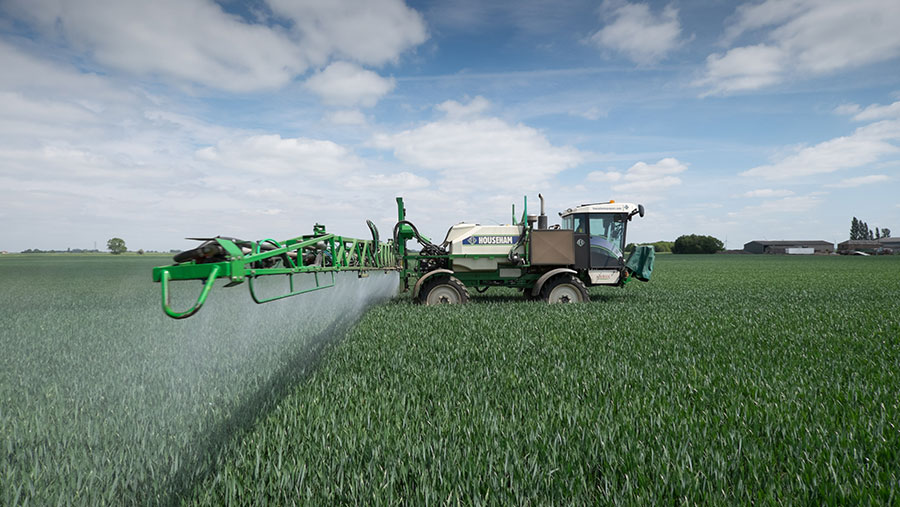Digital crop spraying system set to arrive in 2019
 © Tim Scrivener
© Tim Scrivener A variable-rate fungicide spray system that could save growers money on pesticides is set to be available in 2019 from agrochemicals giant Bayer. It will be launched next year in France and Germany.
The plan is to use a wide range of data, from weather to variety choice, to allow wheat growers to target T2 flag leaf sprays on heavy disease pressure areas and give reduced sprays where the pressure is lower.
Tobias Menne, head of digital farming at Bayer’s crop science division, said the company would learn from its experience in France and Germany in 2018, and look to launch the system in the UK in 2019.
See also: Wet weather prompts phoma disease alert for oilseed rape
“We will be using real-time satellite data to tell growers how much product is needed, to achieve better timing and encourage the efficient use of fungicides,” he told Farmers Weekly.
Updated system
The German company is looking to update the Field Manager system it acquired with the purchase of Proplant – a software company specialising in plant health diagnosis – 18 months ago, which gives risk alerts about crop diseases.
The new updated system will use rainfall, temperature and varietal information, and then add satellite data on the thickness of crops to assess disease risk to achieve the right spray timing and dose rate.
Mr Menne also hopes the improved targeting of diseases, such as septoria at the T2 stage, will encourage growers to use the best product available.
“By targeting applications, farmers can use better and more expensive products if they are confident it will be more effective,” he added.
Experience in Canada in spring oilseed rape, or canola, which typically only receives one fungicide spray because of the short growing season, showed fungicide spraying could be switched off in certain areas of the field that only have a thin crop.
Mr Menne said the new system would be compatible with most existing electronic systems in tractor cabs.
Sprayer sensors
On herbicides, Bayer is looking to develop its existing weed identification product, Weedscout, and put sensors on farm sprayers to only spray when weeds are present.
It is linking up with fellow German group Bosch to look at putting sensors on sprayers, which could be available on UK farms by 2021.
This Xarvio system could cope with a number of different crop protection products using six sensors on a 36m boom, and the updated version will be able to detect diseases, insects and crop nutrition needs as well as weeds, said Mr Menne.
“Satellite data can give us a forecast of how much product will be used, so this will avoid growers having to dispose of a half-full sprayer tank,” he added.
Drones in Brazil
In Brazil, the group is set to test a system using drones working alongside sprayers across 200,000ha of land this coming season to improve the efficiency of herbicides.
The drone will monitor the level of weeds in a field and then help to control the herbicide rate being used by the farm sprayer.
If a herbicide such as glyphosate has been used and there are patches of resistant weeds, then the grower can return to the field and patch spray with a herbicide with a different mode of action.
“This is aimed at giving a more targeted approach to herbicides,” Mr Menne said.
If the project in Brazil is successful, the scheme could be rolled out in Poland and Ukraine, and eventually France.
Bayer’s planned US$66bn (£49bn) takeover of Monsanto, which is anticipated to be completed in early 2018, will boost the German company’s digital farming footprint further, as Monsanto is already strong in this area.
Mr Menne spoke to Farmers Weekly at a Bayer Future of Farming conference earlier this week at Bayer Crop Science’s global headquarters at Monheim in Germany.

